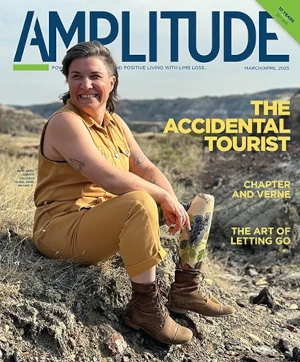
The snow has finally melted away from the fairways and greens of The Loop at Chaska, and adaptive golfers are teeing up for the second season at this unique nine-hole course.
Located in exurban Minneapolis, The Loop is the first US course specifically designed with disability access at its core. It’s billed as a national demonstration project for inclusive golf, reflecting the vision of Tim Andersen, who has spent years promoting accessibility through his nonprofit, Barrier Free Golf. The US Golf Association hails The Loop as “a truly welcoming golf experience that anyone can enjoy,” while Golf.com says the course’s design and facilities are “among the most inviting in the world.”
“Our architect, Benjamin Warren, put together a roundtable discussion of people with disabilities who are also golfers and could offer a unique perspective on how to make the entire course accessible,” says Andersen’s son Paul, the board chair of Barrier Free Golf. User recommendations spanned a wide range of factors, starting with the distance from the parking lot to the pro shop to the first tee. The Loop features easy-to-navigate cart paths, short distances between holes, and benches at every tee box where players can rest and catch their breath. Bathrooms are large enough to accommodate wheelchairs, and there are no steep slopes anywhere on the course.
Another thing that’s noticeably missing? The beach. The Loop has no sand traps, as they can’t be navigated via wheelchairs or other assistive devices. For the same reason, the course has no fairway rough (which is not a radical idea—see Augusta National). And eight of The Loop’s nine holes are par-threes, giving the course an easily manageable length of 1,234 yards, or just over half a mile.
Because it’s a stretch for many people with disabilities to include golf in their budgets, Barrier Free Golf has set aside 2,000 free rounds a year, along with 4,000 reduced-price rounds. The pro shop reserves special tee times for new players, enabling them to try a round without feeling pressured by another group directly behind them.
“If somebody’s trying The Loop for the first time,” Andersen says, “we want them to know, ‘You’re welcome here. We want you here, and you’re not going to feel rushed.’ This way, they have the comfort of saying, ‘Okay, I can breathe. I can relax into this and just see what the experience is like.’”
To cite one example of how The Loop can impact a single life, Andersen shares the story of a disabled veteran who wasn’t leaving his house. At the insistence of one of his friends, he came out to give the course a try. By the end of the season, he’d gone from not leaving his house to playing The Loop at least once a week.
“The course isn’t long,” Andersen explains. “It might only take 45 minutes to get around, so in a way, playing The Loop feels like going for a walk with your friends. It’s just a cool spot if you want to try golf. Most people are not a scratch handicap, so we wanted to focus on creating a course that would be interesting and fun for everybody.”
Someday in the not-so-distant future, The Loop at Chaska will no longer be one of a kind. Barrier Free Golf is set on expansion, with plans underway to build an 18-hole facility in Minnesota that could serve as an anchor site for the US Adaptive Open, where golfers in eight disability categories compete for the championship.
“If we change one person’s life for the better, all this is worth it,” Andersen told Golf.com. “And I know we’ll do better than that.”
For more information, visit chaskaloop.com/the-loop or barrierfreegolf.com.



